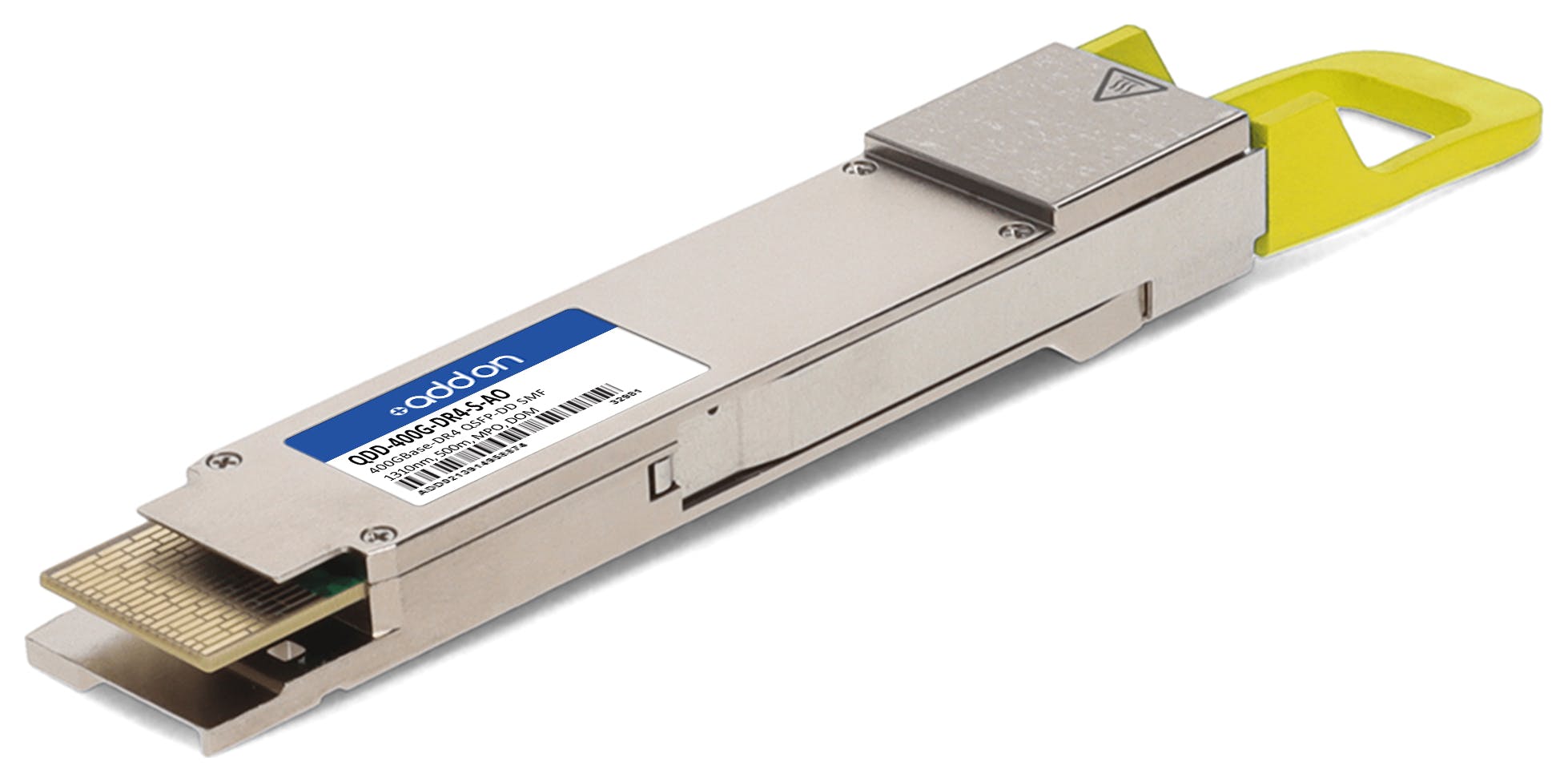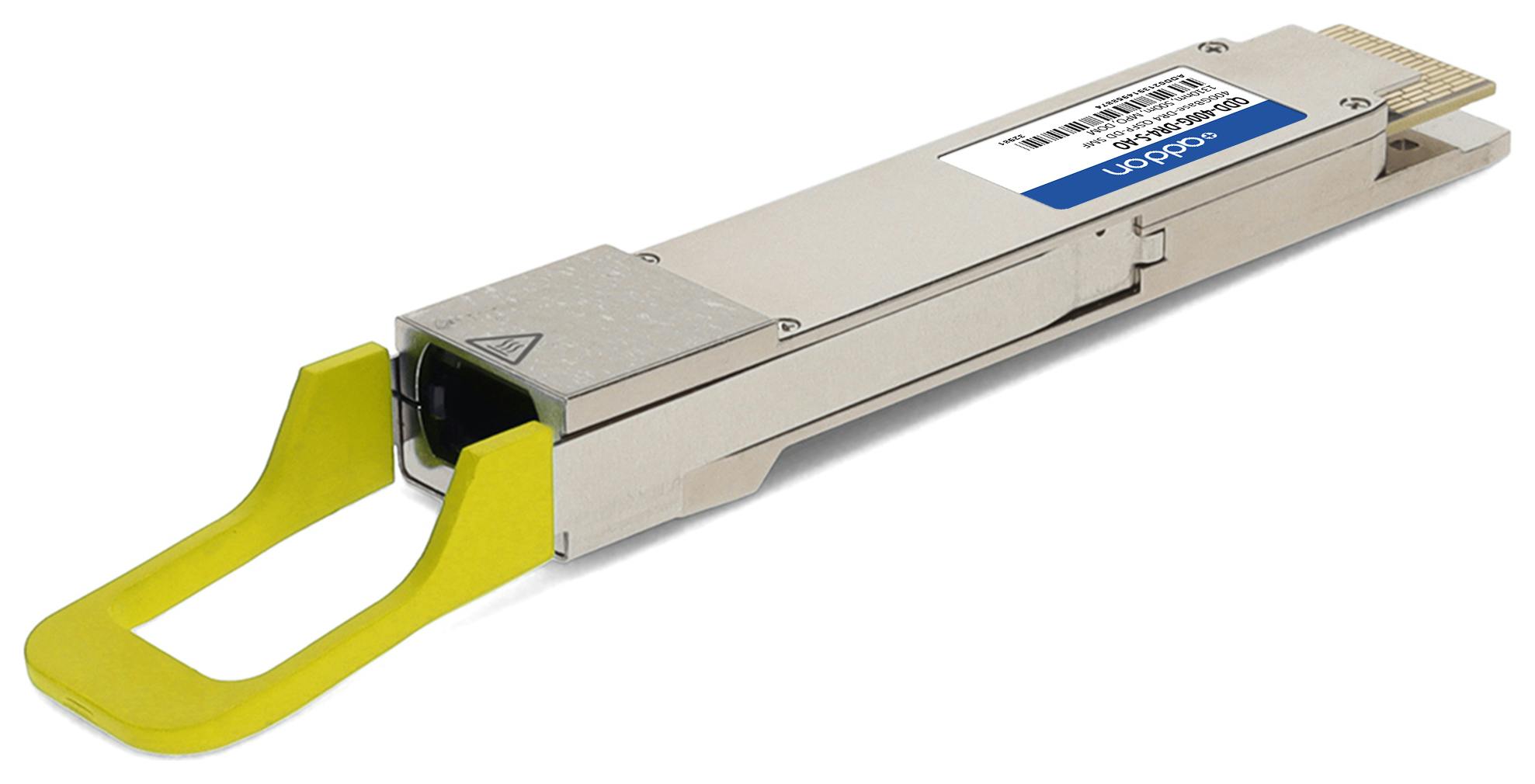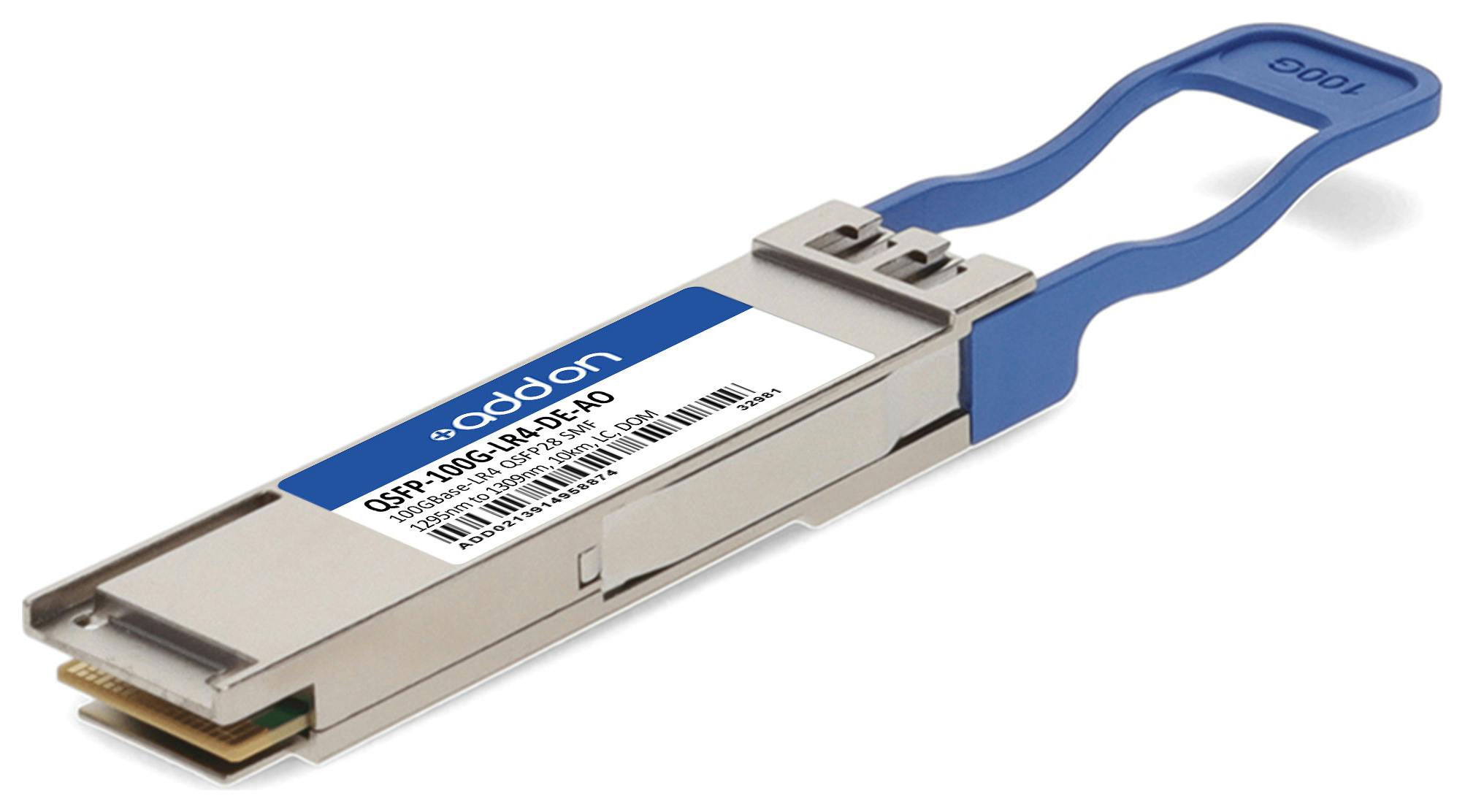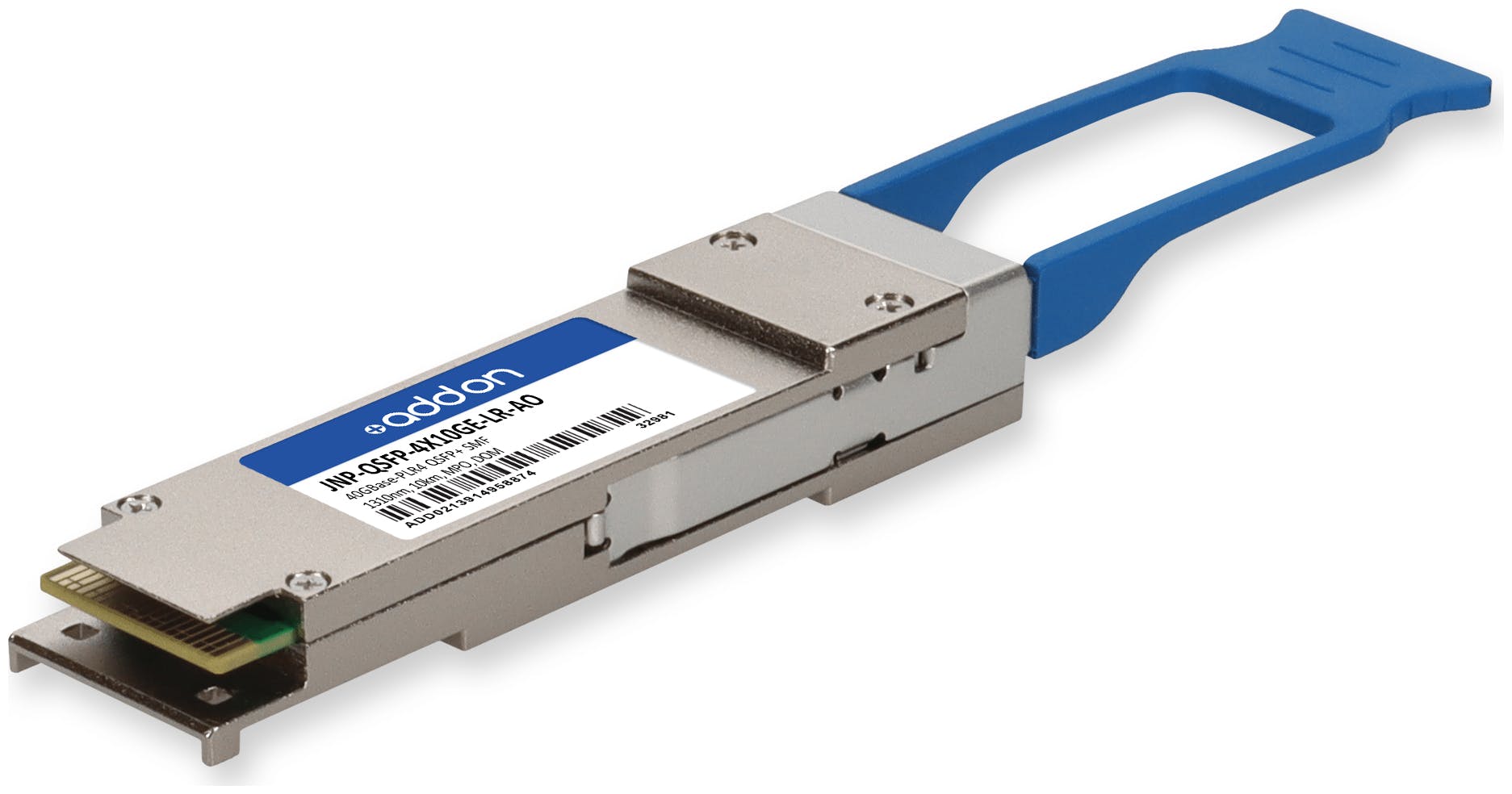Achieving 400G network speeds requires utilizing the industry’s highest performing fiber optics. From top-of-the-line bandwidth density to the flexibility of backwards compatibility, the quad small form pluggable double density (QSFP-DD) is one of the most popular choices for cutting edge fiber network design.
But what makes this form factor such a standout above the others? Why choose QSFP-DD over other form factors like QSFP56, OSFP, CFP8, or even COBO? Read on to learn more.
Defining the QSFP-DD form factor
The QSFP-DD is IEEE802.3bs and MSA standard compliant, however, it doubles the number of interfaces that the standard QSFP28 form supports.
When using standard NRZ modulation, each interface can support 25GB/s for a total of 200G throughput (8x25G). If additional lane density is needed, higher level PAM4 modulation technologies can be leveraged to deliver a 400G (8x50G) signal.
The flexibility of this form factor not only offers a path to 200G but also creates a cost-effective path to scale to 400G in the future. The savvy data center, enterprise network, or service provider network operator can easily leverage either modulation scheme for reducing per port hardware costs for high-performance computing or cloud-based processing applications.
How does QSFP-DD differ from its predecessors (QSFP+, QSFP28, QSFP56)?
There are many functional and physical differences, but let’s begin with its structure and composition.
Although the footprint of the physical transceiver is the same, its electrical interface is quite different. Since this is a double density module, it carries 8 lanes instead of 4. In turn, this increases the amount of ASIC ports to support CAUI-4 and other existing interfaces.
While QSFP+, QSFP28, and QSFP56 can achieve 40G, 100G, and 200G data rates, the lower lane count means that even with PAM4 modulation 400G data rates are not possible. For applications involving 400G data center interconnects, leveraging QSFP-DD transceivers, direct attach cables (DACs), and active optical cables (AOCs) creates a high-performance link capable of scaling to next generation data rates.
A key tenant of the scalability of QSFP-DD transceivers is that they are also backwards compatible with its predecessors. Already deployed QSFP+ transceivers can remain in use without compromising performance of the network beyond the QSFP-DD. This keeps upgrade costs in check by compartmentalizing and deferring replacement of QSFP to QSFP-DD modules to a later time.
Form Factor | QSFP56 | |||
Per Channel Data Rate | 25G/50G | 50G | 25G | 10G |
Lane Count | 8 | 4 | 4 | 4 |
Modulation Type Supported | NRZ & PAM4 | PAM4 | NRZ | NRZ |
Backward Compatibility | QSFP+, QSFP28, QSFP56 | QSFP+, QSFP28 | QSFP+ | N/A |
Why QSFP-DD over other 400G capable form factors (OSFP, CFP8, & COBO)?
When compared to the octal small form pluggable (OSFP), the QSFP-DD is quite similar. Both utilize eight lanes to achieve 400G data rates (8x50G), however, the OSFP is planned to later support 800G signals. The QSFP-DD is a better option for those needing the interim step to 200G not only for cost, but also due to reduced power consumption.
OSFP tends to be a better choice for operators immediately moving to 400G with desire for later scalability, however, OSFP is not backwards compatible with QSFP+ and its other forms. This means a move to 400G will come at a higher immediate cost with OSFP with savings later realized by deferring further cost at the 800G upgrade.
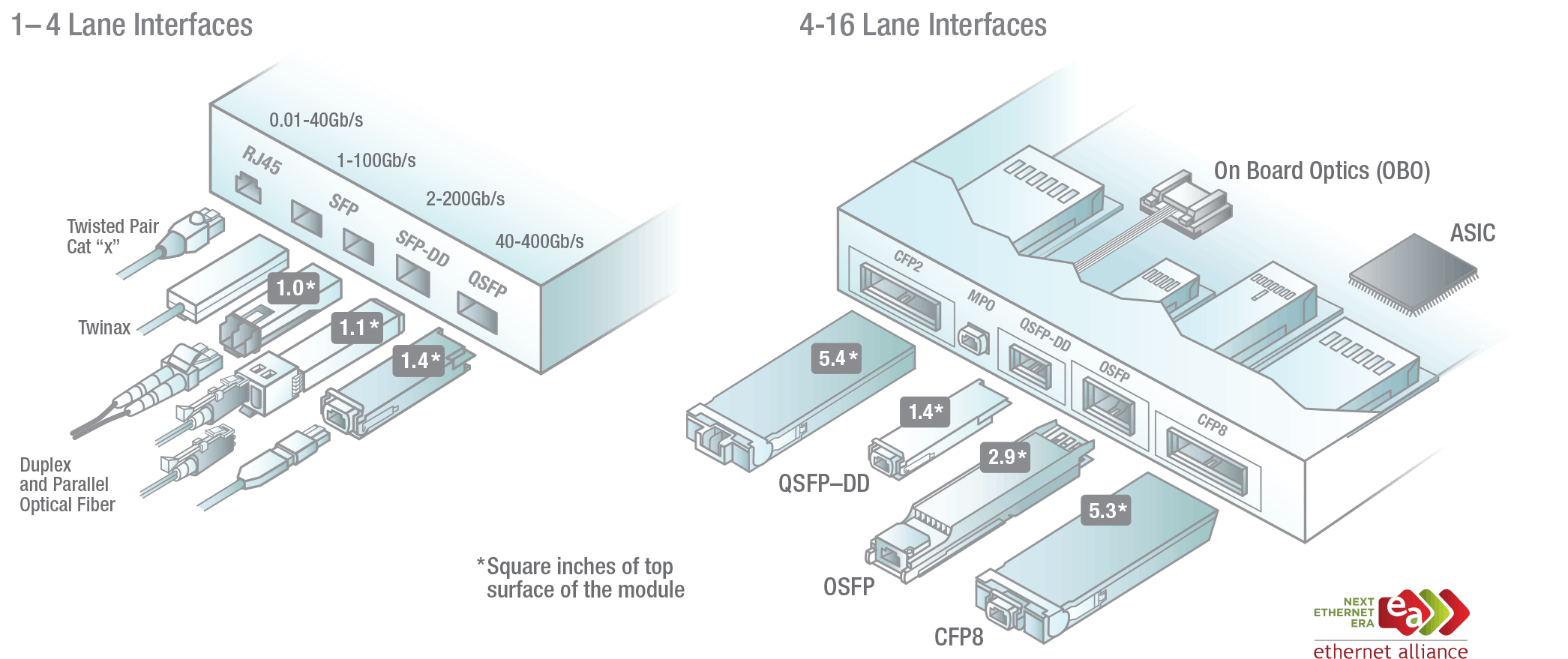
CFP8 is another popular form factor for 400G applications due to its support for both 16x25G and 8x50G, however, it has a much larger physical footprint as well as in elevated power consumption levels. Unfortunately it is neither backwards compatible nor scalable to 800G.
Our final current option is the unique consortium for on-board optics (COBO). Though newer, this type is installed in the line-card. This installation method puts many features of the QSFP-DD out of reach for a COBO, such as lacking the flexibility provided by a hot-pluggable optic. Through an 8 lane 1x400G or a 16 lane 2x400G connector interface, however, it can support both 400G and 800G.
Is QSFP-DD preferred for 400G deployments?
Yes, but it also depends on the application. If you don’t need the 200G interim step, there may be deferred operational and capital expense savings by moving straight to 400G. However, if budget or downtime is a concern, the interim step may allow for deferred initial expenses and long term operational savings.
The market is moving towards adopting QSFP-DD as a form factor for 800G, with the first Multi-Source Agreement (MSA) specifications for a QSFP-DD800 form factor already released. While the future may hold other technological advancements in the 800G race, it appears the QSFP-DD form factor is here to stay.

